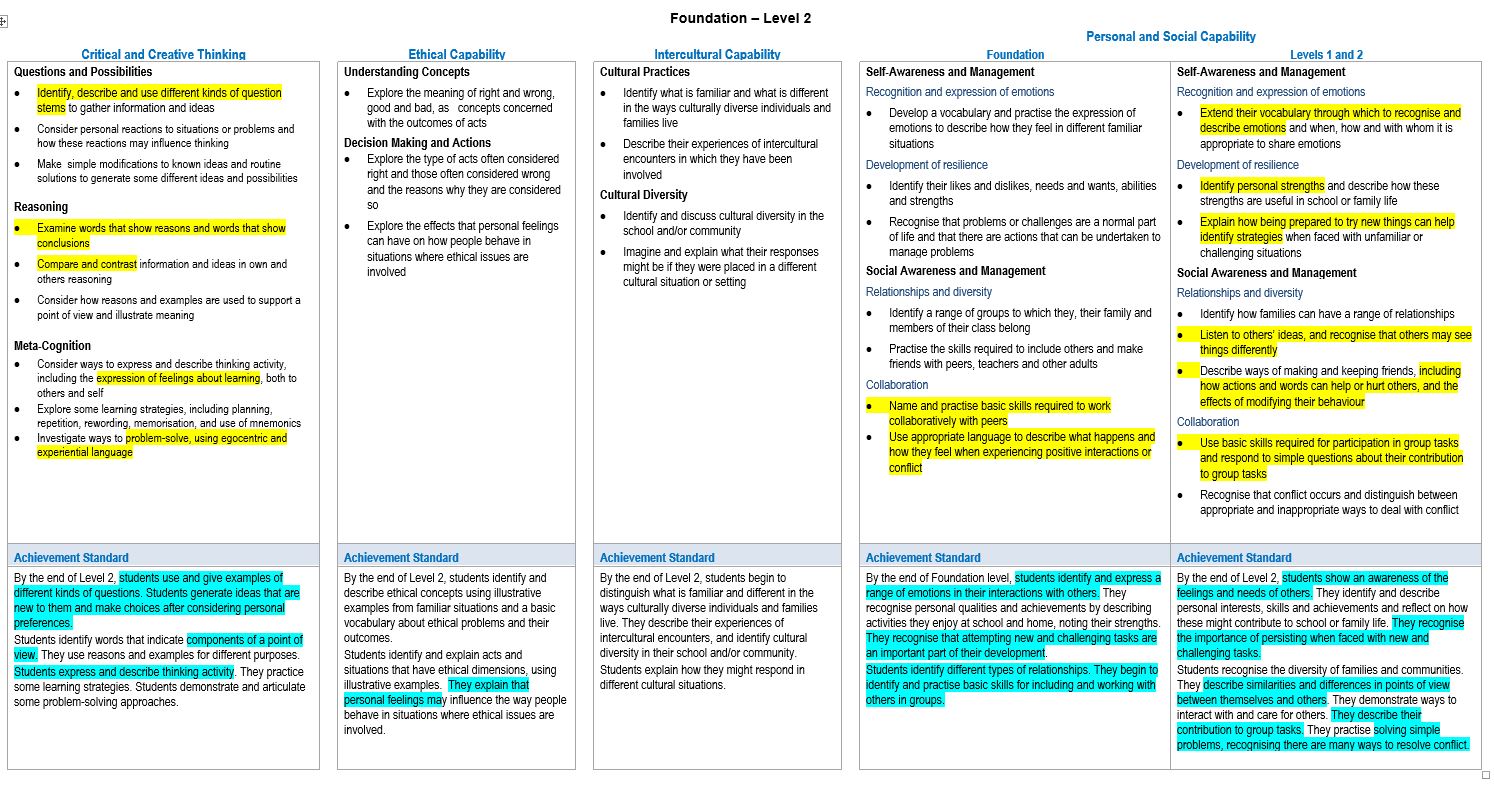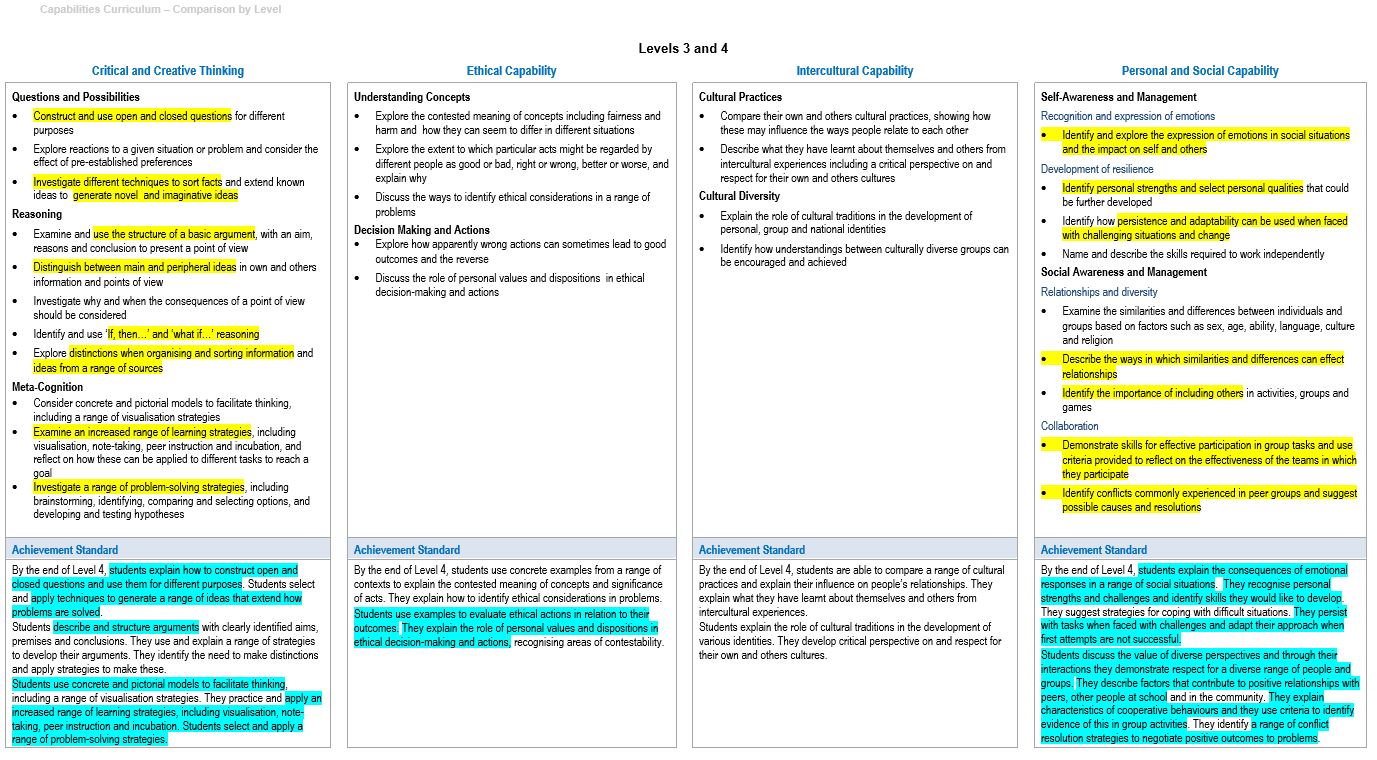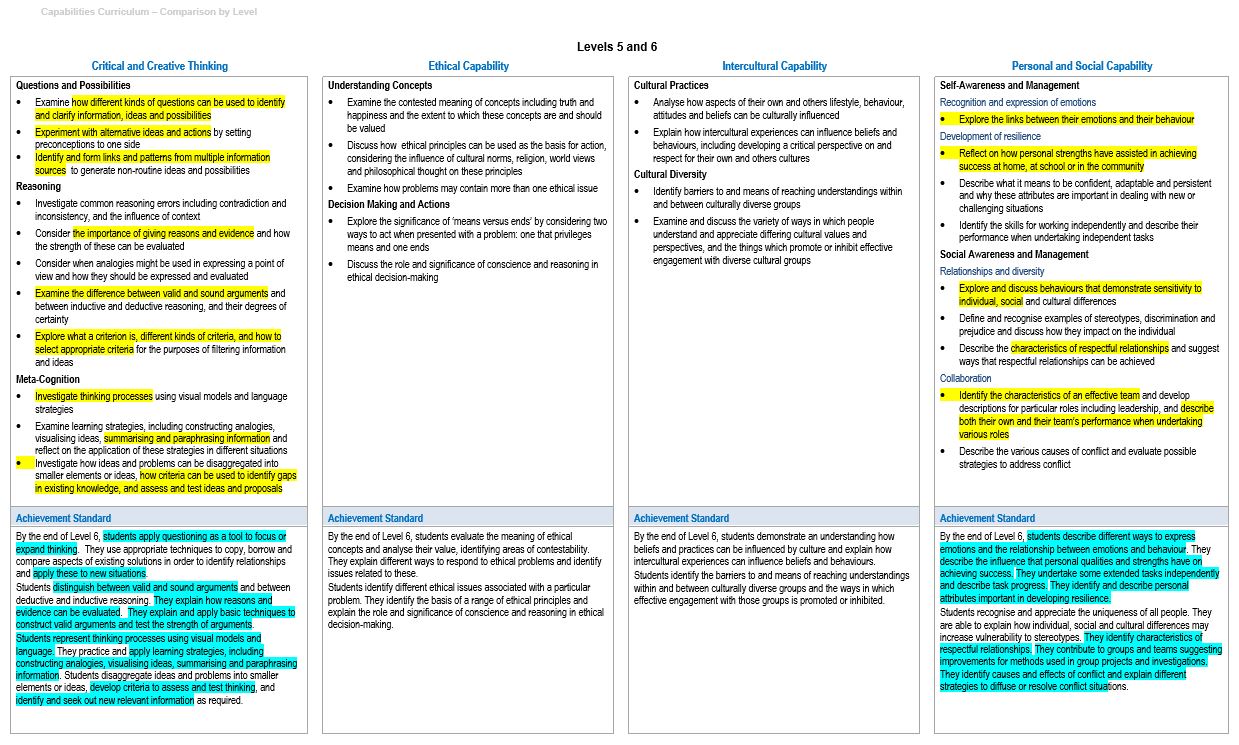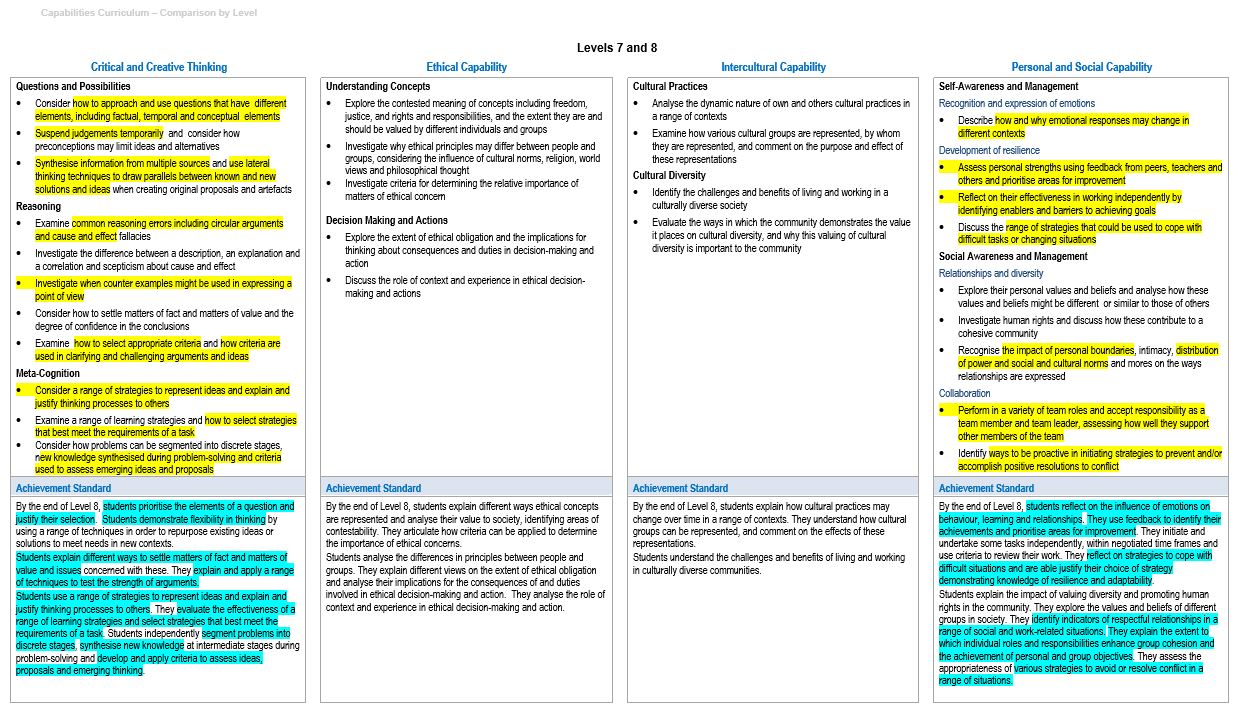links to the victorian curriculum
Most educators (certainly those working within a State or Government system) are required to cover a degree of mandated content. We are often asked whether S.O.L.E. distracts the teacher from addressing these requirements and the answer is an unequivocal NO!
An important step in developing a great S.O.L.E. session is question formulation. As the question is usually drawn directly from designated content statements then the knowledge the students access has line of sight back to the curriculum. S.O.L.E. also helps students “Learn How to Learn”.
On this page you will see an example of how S.O.L.E. learning addresses aspects of curriculum requirements. When you examine the Victorian Curriculum S.O.L.E. picks up on many of the student capabilities listed in the document particularly in the Critical & Creative thinking and Personal and Social capability. Below are samples from Foundation to level 8.
In Reading and Viewing, Writing and Speaking and Listening many of the skills prescribed are observable when using S.O.L.E. as the vehicle. e.g. pursuasive writing - when students discover content and information they are asked to compare and contrast and to form an opinion/arrive at a conclusion. They can then undertake a persuasive writing piece based on their understanding and opinion.
An important step in developing a great S.O.L.E. session is question formulation. As the question is usually drawn directly from designated content statements then the knowledge the students access has line of sight back to the curriculum. S.O.L.E. also helps students “Learn How to Learn”.
On this page you will see an example of how S.O.L.E. learning addresses aspects of curriculum requirements. When you examine the Victorian Curriculum S.O.L.E. picks up on many of the student capabilities listed in the document particularly in the Critical & Creative thinking and Personal and Social capability. Below are samples from Foundation to level 8.
In Reading and Viewing, Writing and Speaking and Listening many of the skills prescribed are observable when using S.O.L.E. as the vehicle. e.g. pursuasive writing - when students discover content and information they are asked to compare and contrast and to form an opinion/arrive at a conclusion. They can then undertake a persuasive writing piece based on their understanding and opinion.




